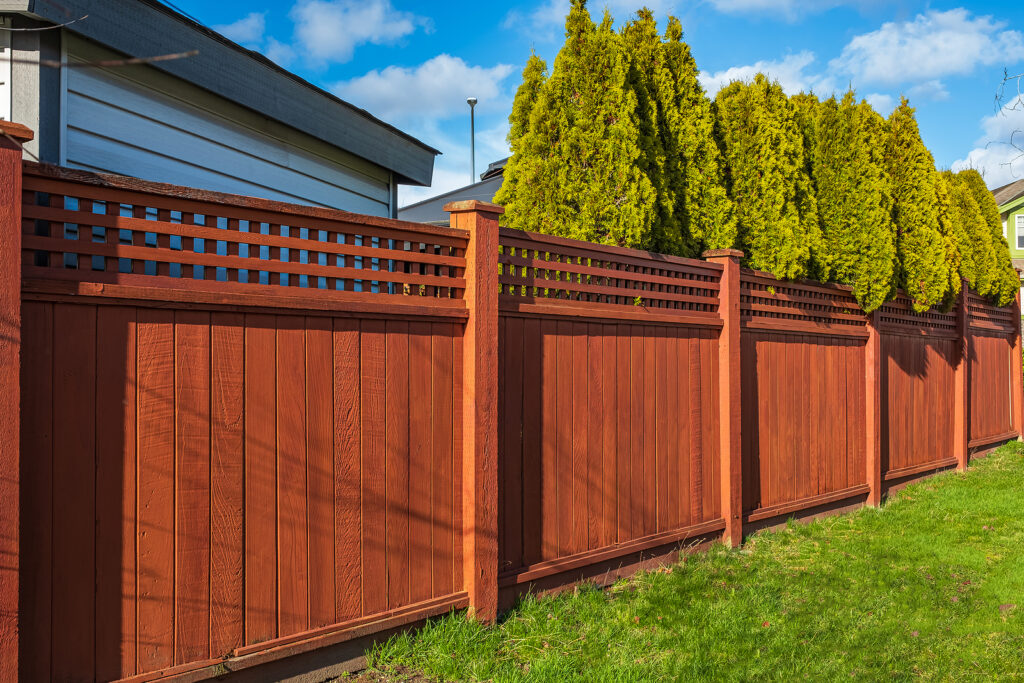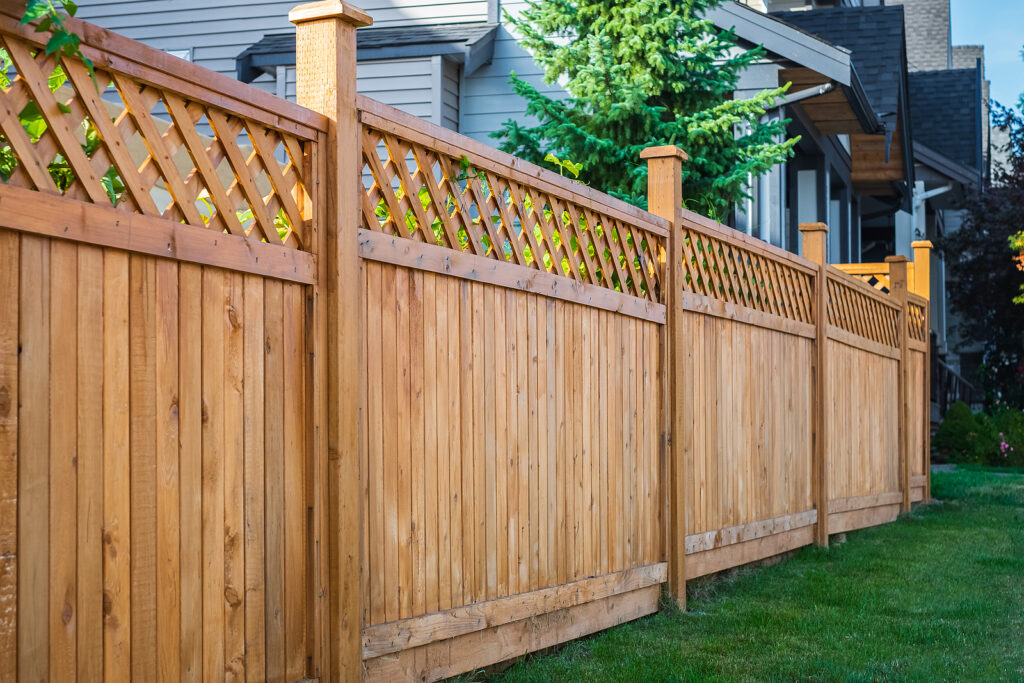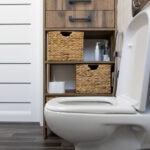Cheap DIY Privacy Fence
When my family and I wanted to enjoy some privacy in our backyard without blowing our budget, we decided to take matters into our own hands and build a DIY privacy fence. We were tired of nosy neighbors and wanted a clear boundary for our property, but high-quality fences were just too expensive.
So, we embarked on a journey to create an affordable solution. In this guide, I'll share the budget-friendly options that really worked for us, so you too can enjoy some much-needed privacy without breaking the bank.
Why Opt for a Cheap DIY Privacy Fence?
Investing in a cost-effective DIY privacy fence offers a range of advantages that extend well beyond the initial cost savings. Here's a closer look at why these affordable fencing options have gained popularity among homeowners:
- Economical Solution: Opting for a do-it-yourself approach to installing a privacy fence significantly slashes labor expenses, allowing you to allocate your budget more efficiently.
- Tailored to Your Needs: DIY fences offer the advantage of customization. You can design and build the fence to precisely match your preferences and fit your property's unique dimensions. This level of personalization ensures that your fence complements the aesthetics and functional requirements of your outdoor space.
- Sense of Accomplishment: Building your own privacy fence ideas cheap provides a satisfying sense of accomplishment. It's an opportunity to showcase your DIY skills and creativity while enhancing your property's security and privacy. This hands-on experience can boost your confidence and foster a deeper connection to your home.
- Future-Proof Upgrades: DIY fences allow for flexible, incremental improvements over time without requiring a significant initial investment. You can start with a basic design and gradually add features such as decorative elements, gates, or enhanced security measures as your needs evolve or your budget allows.
Choosing the Right Materials
When embarking on the journey to create a cost-effective DIY privacy fence, the choice of materials plays a pivotal role in ensuring both affordability and durability. Here's a detailed look at some budget-friendly material options to consider:
Bamboo
Bamboo is an excellent choice for those seeking a sustainable and visually appealing fencing solution. This fast-growing plant is eco-friendly and can create a unique, natural aesthetic for your fence. Its versatility allows you to customize the design to your liking while maintaining a low cost.
Repurposed Pallets
If you're looking for a thrifty yet attractive option, consider repurposed pallets. These discarded wooden pallets can be upcycled into charming and sturdy fence split rail. With a touch of creativity and some DIY skills, you can transform pallets into a personalized privacy barrier that adds character to your outdoor space.
Corrugated Metal Sheets
To infuse a modern and industrial flair into your privacy fence, combine wood with corrugated metal sheets. This combination not only offers an edgy aesthetic but also ensures durability. The metal sheets provide strength and weather resistance, making them a long-lasting and cost-effective choice.
Wire and Plants
For a living, green privacy fence, consider a fusion of wire fencing and climbing plants. This approach not only adds a touch of nature to your outdoor area but also enhances privacy over time as the plants grow and intertwine. While the initial investment may be relatively low, the ongoing maintenance involves nurturing the plants to achieve the desired coverage.
Cedar or Pine Boards
Utilizing cedar or pine boards can be a smart choice for a traditional and budget-friendly wooden fence. These types of wood are readily available, making them cost-effective options. Additionally, they are naturally resistant to decay and insects, ensuring a longer lifespan for your fence.
Chain Link with Privacy Slats
If you have an existing chain-link fence or are considering one, you can enhance privacy by adding privacy slats. These slats come in various colors and styles, providing an affordable way to transform a standard chain-link fence into a more private enclosure.
Vinyl Fencing
Vinyl fencing is a low-maintenance and cost-effective alternative to traditional wood. It comes in various styles and colors, allowing you to choose a design that matches your aesthetic preferences. While the initial cost may be slightly higher than some other options, the long-term savings from minimal maintenance can make vinyl a practical choice.
Composite Materials
Composite materials, such as wood-plastic composites (WPC), offer a combination of wood-like appearance and durability. While they may be a bit more expensive upfront, they require very little maintenance over the years, making them a cost-effective long-term choice.

Top 5 Budget-Friendly Privacy Cheap Fence Ideas
When it comes to crafting an affordable yet stylish privacy fence, creativity can go a long way. Here are five top budget-friendly privacy fence ideas, each offering its unique charm and practicality:
- The Classic Pallet Fence: This timeless DIY option involves repurposing wooden pallets, which are often readily available for free from local businesses or recycling centers. Collect enough pallets and unleash your creativity by painting or staining them to match your outdoor decor. Stacking them horizontally or vertically creates a sturdy and eco-friendly fence that adds rustic charm to your space.
- Bamboo Screen: For a touch of the tropics in your backyard, consider bamboo screens. Bamboo poles can be securely fastened with horizontal wooden beams to create a visually appealing and cost-effective privacy fence. This natural material not only offers privacy but also infuses a tranquil ambiance into your outdoor area.
- Corrugated Metal and Wood Combo: If you're aiming for a chic and contemporary look, consider a combination of corrugated metal sheets and wooden slats. Alternating these materials creates a fence that's both durable and urban-inspired. The metal provides robustness, while the wood softens the aesthetic, resulting in a balanced and eye-catching design.
- Wire Mesh with Climbing Plants: Merge the beauty of nature with practicality by installing wire mesh panels between wooden or metal posts. Plant climbing vines such as ivy, honeysuckle, or clematis at the base of the fence. Over time, these plants will flourish, covering the mesh and forming a lush green wall. This living fence not only offers privacy but also enhances the natural appeal of your outdoor space.
- Lattice Panels: Wooden lattice panels are a versatile option that combines style and functionality. You can allow climbing plants to flourish on them or paint them in colors that complement your property's aesthetics. Lattice panels are not only visually appealing but also cost-effective, making them an excellent choice for those seeking an elegant yet budget-friendly privacy fence.
Maintaining Your DIY Fence on a Budget
Proper maintenance is key to extending the life of your DIY fence, ultimately helping you save money in the long term. Here's a comprehensive guide to budget-friendly fence upkeep:
Regular Inspections
Schedule periodic inspections to identify wear and tear or damage early on. Prompt detection of issues allows for more cost-effective and manageable repairs. Pay close attention to posts, boards, and any hardware, such as screws or nails, that may need attention.
Weatherproofing
Protecting your wooden fence from moisture and UV rays is essential for durability. Invest in a quality wood sealer or stain, which acts as a barrier against the elements. While there's an initial cost, it significantly reduces the need for extensive repairs or replacement down the line.
Pest Control
Be vigilant for signs of pests like termites or other wood-boring insects that can wreak havoc on your fence. Consider using natural pest repellents as an eco-friendly solution, which can be more budget-friendly than professional pest control services. Regularly inspect your fence's wood for any infestations or damage.
Trimming and Pruning
If your fence features climbing plants or foliage, regular trimming and pruning are crucial to maintaining its appearance and health. Overgrown vegetation can weaken the structure and create a haven for pests. By dedicating some time to maintaining the greenery, you can prevent potential damage and keep your plant-based fence looking neat and thriving.
Cleaning
Periodically clean your fence to remove dirt, mildew, or algae buildup. A simple mixture of water and mild soap, along with a scrub brush or pressure washer, can do wonders. Regular cleaning not only preserves the fence's appearance but also prevents moisture retention and potential wood rot.
Hardware Check
Don't overlook the hardware that holds your fence together. Loose screws, bolts, or nails can compromise the stability of your fence. Regularly inspect and tighten these components to ensure the fence remains secure and intact.
DIY Repairs
Minor repairs can often be done yourself, saving on the cost of professional services. Invest in basic tools and materials needed for common fence fixes, such as replacing damaged boards, tightening loose hardware, or patching small holes.
Benefits of Installing a DIY Privacy Fence
- Cost Savings: One of the most compelling reasons to opt for a DIY privacy fence is the potential for significant cost savings. By handling the labor yourself, you can avoid the expenses associated with hiring professionals.
- Customization: A DIY approach allows you to tailor the fence to your specific requirements and tastes. Whether you desire a particular height, style, color, or material, you have the freedom to make it exactly how you want.
- Personal Satisfaction: There's a unique sense of accomplishment that comes from completing a home project on your own. Every time you look at your fence, you'll be reminded of the effort you put into it.
- Flexibility in Timing: When you're in charge of the project, you can work on the fence at your own pace. This flexibility allows you to break up the task into manageable chunks or work on it during weekends or free hours.
- Knowledge and Skill Acquisition: Building your own fence offers a great opportunity to learn new skills. Whether it's carpentry, landscaping, or another trade, you can acquire and hone abilities that might be useful in future DIY projects.
- Material Control: You get to select the quality and type of materials firsthand. This control ensures you're not compromising on quality, especially if you're particular about sustainability or the source of your materials.
- Maintenance Familiarity: Since you built the fence yourself, you'll have a thorough understanding of its construction. This knowledge can be invaluable when it comes to routine maintenance or repairs, as you'll know exactly where potential weak spots are and how to address them.
- Incremental Upgrades: Over time, you might want to add features or make adjustments to your fence. Having built it yourself, you'll find it easier to make these changes seamlessly.

Safety and Precautionary Measures
When undertaking a budget-friendly DIY fence project, it's crucial to maintain a strong focus on safety. Here's a comprehensive overview of safety measures to keep in mind:
Call Before You Dig
One of the first steps in fence construction is digging postholes. However, before you pick up a shovel, always check for underground utilities. Contact your local utility companies or utilize online resources to ensure that you won't accidentally dig into gas lines, water pipes, or electrical cables. Failing to do so can lead to hazardous situations and costly repairs.
Proper Tools
Using the right tools for the job is not only essential for efficiency but also for safety. Ensure that your tools are in good working condition, as damaged or worn tools can be dangerous. Basic tools for fence installation may include shovels, post hole diggers, hammers, saws, and measuring equipment.
Safety Gear
Prioritize your personal safety by wearing appropriate safety gear. Gloves protect your hands from splinters and sharp objects, safety goggles shield your eyes from debris, and ear protection can be crucial when operating loud machinery or tools. Invest in quality safety gear to minimize the risk of accidents and injuries.
Stable Foundation
Properly anchoring fence posts is essential, particularly in regions susceptible to strong winds. Ensure that your fence posts are firmly embedded in the ground and properly secured. Adequate post depth and the use of concrete can help create a stable foundation for your fence, reducing the risk of it being toppled or damaged during adverse weather conditions.
Work Safely with Others
If you're not working alone, communicate clearly with your DIY team to avoid accidents and injuries. Establish a plan, assign tasks, and ensure everyone is aware of safety procedures. Always have a first aid kit on hand and be prepared to address minor injuries promptly.
Weather Considerations
Be mindful of weather conditions during your DIY fence project. Slippery surfaces from rain or snow can increase the risk of falls, so take extra precautions when working in adverse weather. If thunderstorms are forecasted, it's best to postpone work until conditions are safe.
Take Breaks
DIY projects can be physically demanding. Remember to take regular breaks, stay hydrated, and avoid overexertion. Fatigue can lead to accidents, so it's essential to stay alert and well-rested.
Frequently Asked Questions about Cheap DIY Privacy Fences
1. Can I use a combination of materials for my DIY privacy fence?
Absolutely, you have the creative freedom to combine various materials such as wood, metal, and even plants to craft a distinctive and cost-effective fence design. This approach allows you to achieve a unique aesthetic while also catering to specific needs, like durability or aesthetics.
2. Is vinyl fencing more expensive upfront compared to other options?
While vinyl fencing may entail a slightly higher initial investment, it offers significant long-term savings. This is primarily due to its minimal maintenance requirements. Unlike wood, which can require regular painting or staining, vinyl fencing remains in good condition with only occasional cleaning, making it a cost-effective choice over time.
3. How can I make my DIY fence more eco-friendly?
You can adopt several eco-friendly practices for your DIY fence project:
- Choose sustainable materials: Consider using environmentally friendly options like bamboo or repurposed pallets, which reduce the impact on natural resources.
- Natural pest control: Instead of resorting to chemical treatments, explore natural pest control methods to protect your fence, such as companion planting or introducing beneficial insects.
- Living fence: Opt for a living fence by incorporating plants and climbing vines. This not only enhances the overall aesthetics but also contributes positively to the environment by promoting biodiversity, reducing air pollution, and providing habitat for wildlife.
4. What tools do I need for building a DIY privacy fence?
You'll require a set of basic tools for your DIY fence project. These may include shovels, post hole diggers, hammers, saws, measuring equipment (like a tape measure or level), and safety gear (such as gloves and safety glasses). The specific tools needed can vary depending on the complexity of your design and the materials you choose, so it's essential to plan accordingly.
5. Can I build a DIY privacy fence by myself, or should I hire help?
The decision of whether to tackle the project alone or seek assistance depends on several factors:
- Skill level: If you possess the necessary skills and experience in construction or DIY projects, you may be able to build the fence on your own. However, if you're a novice, consider seeking guidance or help from experienced individuals.
- Project complexity: The complexity of your fence design and its size will play a significant role in determining whether you can handle it independently. More intricate or larger projects may benefit from additional hands.
- Available time: Building a fence can be time-consuming, so evaluate your schedule to ensure you have the time needed for the project.
Conclusion
In summary, our journey of constructing a budget-friendly DIY privacy fence has been an incredibly fulfilling and transformative experience. Beyond the initial motivation for privacy and property delineation, this project has provided us with significant cost savings, a deep sense of accomplishment, and a profound connection to our home.
We relish the freedom to customize our fence, enhancing both its functionality and aesthetics to suit our needs. Safety has remained paramount throughout the process, ensuring not only the project's success but also our well-being.
In the end, our DIY fence represents more than just a physical barrier; it embodies the spirit of creativity, learning, and personal ownership. This endeavor has enriched our lives, and we wholeheartedly encourage others to embark on similar DIY adventures, as the rewards, both practical and personal, are immeasurable spend expect to spend.
Sources
https://www.agric.wa.gov.au/small-landholders-western-australia/fencing-beginners
https://www.forbes.com/home-improvement/outdoor-living/privacy-fence-cost/




